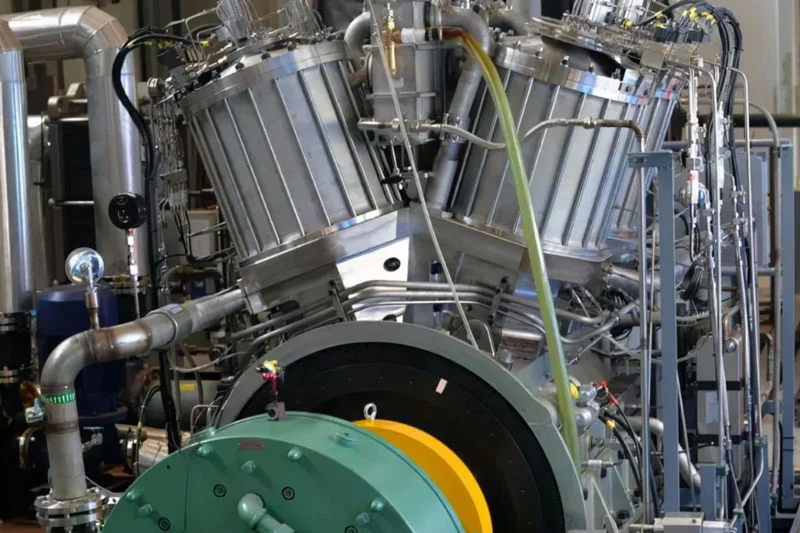A group of Chinese scientists reported the development and testing of powerful microwave weapons to destroy drones, aircraft and even satellites. But the most surprising thing is that the electricity required for this is generated by four Stirling engines installed on the truck. As a result, the combat platform consumes only 20% of the power required to power alternative energy weapons and can operate continuously for four hours.
This is the first public announcement of the creation of a combat microwave complex on Stirling engines. Stirling engines are being developed in China for electricity generation in space and confined spaces such as submarines. These engines work with the closed volume of the working body and for this they can use all kinds of external heat.
In the case of a microwave gun or emitter, four compact Stirling engines mounted on an automobile platform not only generate electricity but also act as a refrigerator, removing heat from the superconducting coil at the heart of the weapon. The coil produces an electromagnetic field with a strength of up to 4 T (tesla). This is 68,000 times the intensity of the Earth’s magnetic field and only twice as weak as that in the bowels of the Large Hadron Collider. The stability and strength of the electromagnetic field created by the superconducting coil is the key to the regular operation of such weapons.
One limitation to the operation of Stirling engines was the fairly high limit of subcooling allowed. That is, they stop working when 40–50 °C remains before absolute zero. To combine motors with a superconducting magnetic coil, materials with high-temperature superconductivity had to be selected for its winding. A tape made of the material ReBCO (barium-copper rare earth oxide) was particularly suitable.
The nuance here is that China bought this American-made tape. In 2018, the US government banned the supply of these products to China and therefore had to independently create the production of this material. In China, this was made by the Shanghai Superconductor company. In less than two years, it has managed to single-handedly produce the 400 km annual belt requested for a wide range of missions, from weapons to reactors and maglevs. Production capacity will be increased to 2,000 km per year by the end of 2024. If Chinese sources are to be believed, American companies began purchasing this tape from China, rejecting suppliers from the United States and other countries.
Scientists reported their success in developing microwave weapons based on Stirling engines in an article in the journal. High Power Laser and Particle Beams. A joint team from the Northwest Institute of Nuclear Technology in Xi’an and the Institute of Electrical Engineering of the Chinese Academy of Sciences in Beijing was responsible for the development. The developers admit that the setup is far from perfect. But it works and can be improved.













